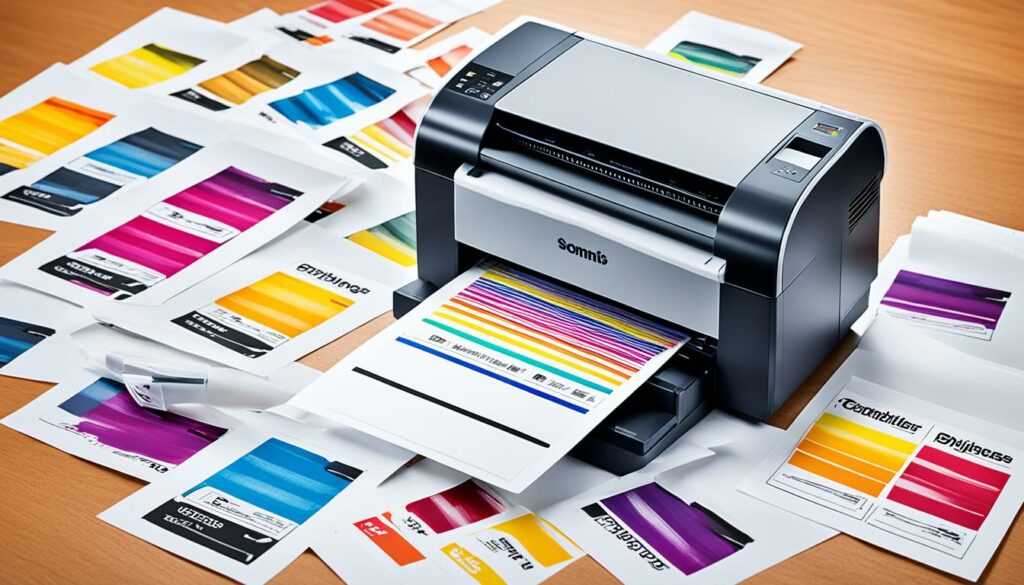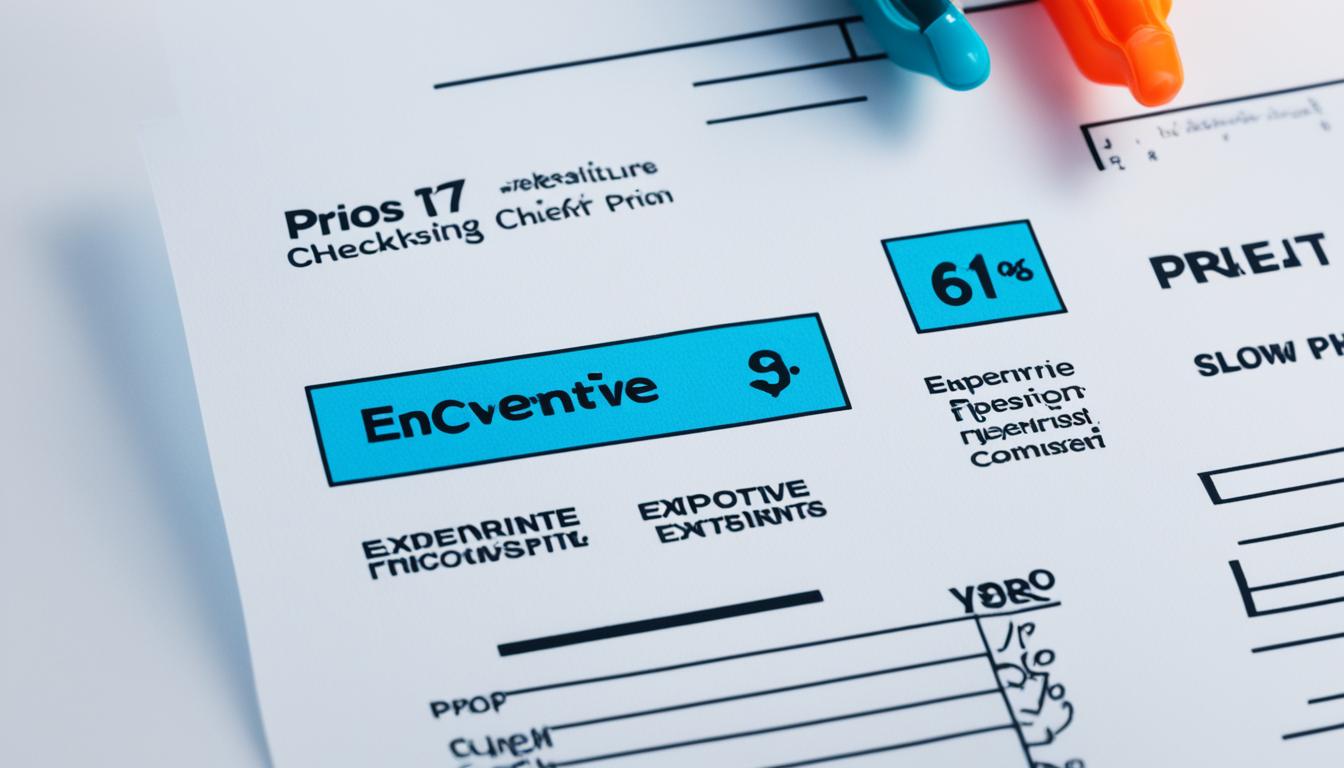Are you considering purchasing an inkjet printer but want to weigh the advantages and disadvantages first? Look no further! In this article, we'll break down the pros and cons of inkjet printers in simple terms, helping you make an informed decision.
First, let's explore the advantages of inkjet printers. One of the biggest benefits is their low cost. Inkjet printers are generally more affordable compared to laser printers, making them a popular choice for home users and small businesses. Additionally, inkjet printers produce high-quality output with fine details, making them ideal for printing photos and graphics. They also offer the ability to print in vivid color, bringing your documents to life.
Another advantage of inkjet printers is their ease of use. These printers are known for their simple operation, making them user-friendly for individuals of all skill levels. Inkjet printers are also quieter than dot matrix printers and have no warm-up time, allowing you to start printing right away.
However, inkjet printers also come with their share of disadvantages. One common drawback is the durability of their print heads. These print heads are prone to clogging and damage, requiring frequent cleaning and sometimes replacement. Additionally, inkjet printers use replacement ink cartridges, which can be costly, especially for high-volume printing.
In terms of speed, inkjet printers tend to be slower compared to laser printers. This may not be an issue if you primarily print small volumes, but for larger print jobs, it can be time-consuming. Furthermore, certain types of paper may be prone to ink bleeding and sideways ink carried, which can cause blurred effects on the printouts. Inkjet printers are also sensitive to water, so even a small drop can lead to blurring. Lastly, inkjet printouts are not compatible with highlighter markers, as they may smear or fade.
Key Takeaways:
- Inkjet printers offer a low-cost printing solution with high-quality output.
- They excel in printing vivid colored graphics and photos.
- Inkjet printers are easy to use and have no warm-up time.
- However, they may have issues with print head durability and expensive ink cartridges.
- Inkjet printers are not suitable for high-volume printing and have slower print speeds compared to laser printers.
Understanding Inkjet vs. Laser Printers
When it comes to printers, there are two popular options: inkjet printers and laser printers. Each type has its own unique characteristics and advantages. Understanding the differences between inkjet and laser printers can help you make an informed decision when choosing the right printer for your needs.
Differences in Printing Technology
Inkjet printing works by dropping tiny spots of ink onto the paper, creating a digital image. On the other hand, laser printers use a laser beam to scan photoreceptors, producing digital images.
Pros and Cons of Inkjet Printers
Inkjet printers are known for their ability to produce high-quality photos and image-heavy documents. They have a low start-up cost, can print on various types of paper, and require almost no warm-up time. However, inkjet printers have a slower printing speed compared to laser printers and may not be suitable for high-volume printing. Moreover, inkjet prints can be prone to ink bleeding and blurred effects on certain papers, and they are more sensitive to water, risking blurring even with a small drop. Inkjet printers also have less durable print heads that are susceptible to clogging and damage. Additionally, replacement ink cartridges for inkjet printers can be expensive, and highlighter markers cannot be used on inkjet printouts.
Pros and Cons of Laser Printers
Laser printers, on the other hand, offer several advantages. They are faster than inkjet printers, excel in producing sharp black text and handling small fonts and fine lines, and are ideal for high-volume printing. Laser printers also have a lower cost per page and produce clean, legible letters. However, laser printers may not match the color and photo print quality of inkjet printers. While they can print acceptable quality color photos, inkjet printers are generally better for vibrant and detailed photo prints.
Additional Considerations
Aside from the differences mentioned above, there are a few more factors to consider when choosing between inkjet and laser printers. Inkjet printers are smaller, lighter, and easier to maintain, making them a practical choice for home or small office use. On the other hand, laser printers tend to be bulkier and have higher monthly print volumes. Laser printer toner cartridges also have higher page yield and lower consumable costs per page. However, inkjet printers are more flexible in terms of media compatibility and can handle various types of paper.
Now that you have a better understanding of the differences between inkjet and laser printers, you can make a more informed decision when purchasing a printer that suits your needs.

Comparing Inkjet vs. Laser Printers: Which is Right for You?
When it comes to choosing the right printer, whether for personal or professional use, it's important to consider your specific requirements and preferences. Inkjet and laser printers each have their own strengths and weaknesses, making them suitable for different tasks and workloads.
If you're looking for a printer that can handle small, image-heavy workloads like family photos and school projects, an inkjet printer would be a good choice. Inkjet printers excel in producing high-quality, photorealistic prints with vivid colors. Their ability to print on various types of paper, including glossy and specialty media, makes them ideal for creative projects.
On the other hand, if your printing needs involve heavy volumes of text-based documents, a laser printer would be more economical. Laser printers are known for their fast printing speed and sharp black text, making them suitable for high-volume print jobs and professional documents.
Considerations when choosing between inkjet and laser printers go beyond print quality and speed. Other factors to take into account are device cost, consumable costs per page, cost per page, print resolution, print speed, form factor, and media compatibility.
Inkjet printers generally have a lower upfront cost compared to laser printers, making them more budget-friendly for initial purchase. However, laser printers have lower consumable costs per page and a significantly lower cost per page than inkjet printers in the long run.
When it comes to print quality, inkjet printers are unmatched in their ability to produce vibrant colors and high-resolution photo prints. They truly shine in reproducing detailed graphics and images. On the other hand, laser printers are best known for their sharp and clean black text, making them ideal for documents that require precise legibility.
Print speed and volume are areas where laser printers outperform inkjet printers. Laser printers can handle large print volumes at a much faster pace, making them more suitable for busy workplaces and environments where time is of the essence.
In terms of form factor, inkjet printers are generally smaller and more compact compared to laser printers, which tend to be bulkier. This can be an important consideration if space is limited in your home or office.
Lastly, media compatibility is another factor to consider. Inkjet printers offer more flexibility in handling various types of paper and media, including different sizes and textures. Laser printers, while not as versatile in terms of media compatibility, still provide satisfactory results for basic color printing needs.
Summary of Inkjet vs. Laser Printer Considerations:
| Inkjet Printer | Laser Printer | |
|---|---|---|
| Device Cost | Lower upfront cost | Higher upfront cost |
| Consumable Costs/Page Yield | Higher consumable costs per page | Lower consumable costs per page |
| Cost per Page | Higher cost per page | Lower cost per page |
| Print Quality/Resolution | Excellent for color and photo prints | Superior for sharp black text |
| Print Speed/Volume | Slower printing speed, lower monthly print volumes | Faster printing speed, higher monthly print volumes |
| Form Factor (Size) | Smaller and more compact | Bulkier |
| Media Compatibility | More flexible in handling various types of paper and media | Less versatile, but suitable for basic color printing needs |
Inkjet Printer and How it Works
When it comes to the working mechanism of inkjet printers, understanding the printhead nozzles is key. These printers use a system of small nozzles in the printhead that move side to side, spraying microscopic ink droplets onto the paper as it passes through a roller. This process allows the printer to create images and text.
The ink used in inkjet printers is typically a blend of yellow, magenta, and cyan dye- or pigment-based ink. The printer mixes these inks in different ratios to accurately reproduce images with vibrant colors and intricate details.
Inkjet printers are widely used for home or small office printing due to their many advantages. With their low upfront cost, they are an affordable option for those who need high-quality, photolike prints and graphics. Additionally, inkjet printers are available in both single-function and all-in-one models, offering users extra capabilities such as document scanning, copying, and faxing.
Overall, inkjet printers provide an excellent balance of affordability and quality, making them a popular choice for various printing needs.

Conclusion
Inkjet printers offer several advantages that make them an excellent choice for printing high-quality, vivid color documents, especially photos and image-heavy projects. They are cost-effective, produce fine details, and are easy to use. However, they do have some drawbacks, including less durable print heads, expensive ink cartridges, and slower printing speeds compared to laser printers.
On the other hand, laser printers provide faster print speeds, sharper black text, and better performance for high-volume printing. They also have lower consumable costs per page, making them ideal for businesses with heavy printing needs. However, laser printers tend to be bulkier and have higher upfront costs.
When deciding between an inkjet printer and a laser printer, it's essential to consider your specific requirements and preferences. Factors such as print volume, desired print quality, cost per page, and media compatibility should be taken into account. By carefully evaluating these factors, you can make an informed decision and choose the printer that best suits your needs.
Source Links
- https://nclarion.weebly.com/advantage-and-disadvantage-of-inkjet-printers.html
- https://www.apartmenttherapy.com/inkjet-vs-laser-printers-which-is-better-for-home-use-176198
- https://www.cdw.com/content/cdw/en/articles/hardware/inkjet-vs-laser-printers.html

I'm Morgan, the creator of VPNForMe — a site born from too many hours spent side-eyeing sketchy VPN reviews and buffering videos.
I wanted a place where people could get straight answers about privacy, streaming access, and which VPNs actually deliver — without the hype or tech jargon.

